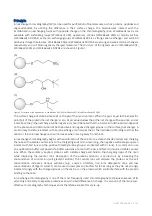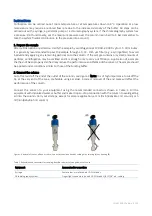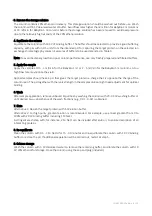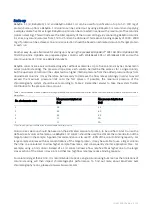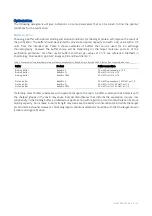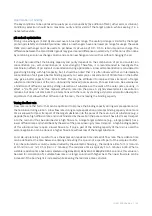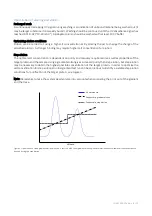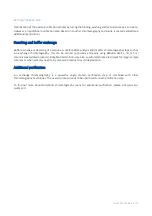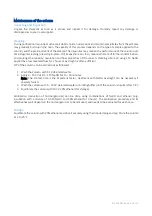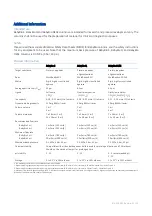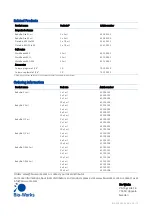
IN 45 100 010 • AA • 7 / 12
Optimization of binding
The key conditions to be optimized is usually pH and conductivity (by addition of NaCl, other salts, or dilution).
Conditions selection should be to maximize purity and/or yield of the target protein, while keeping it in a
native/active state.
pH and salt optimization
Strong ion exchangers (S and Q) are used over a broad pH range. The useful pH range is limited by the target
protein pH stability and solubility window. Weak ion exchangers have a narrower pH range for usage. The weak
DEAE anion exchanger must be used at a pH below its p
K
a
value of 9.0 - 9.5 to retain its positive charge. The
difference between the Q and DEAE ligands may give desired differences in selectivity. Purification is often done
by combining an anion exchange column and a cation exchange column with or without changing the pH.
It should be noted that the binding capacity and purity depends on the combination of pH and counter ion
concentration (i.e., salt concentration or ionic strength). Therefore, it is recommended to investigate the
combination effects of pH and salt concentration during optimization. A low salt concentration is considered to
give strong binding with high capacity, but it should be noted that it is often observed that an intermediate
concentration of salt gives a better binding capacity. For example, a concentration of 50 mM NaCl in the buffer
may give a better capacity than 20 mM NaCl. This may be attributed to improved mass transport of target
substance into the pores of the resin, obtained by reduced pore exclusion. Pore exclusion can be explained as
a hindrance of diffusion caused by strong interaction of substance on the walls of the outer pores, causing, in
effect, a “traffic jam” and thus reduced diffusion rate into the pores. A slightly elevated salt concentration
reduces, but does not eliminate the interactions with the resin by creating a dynamic adsorption-desorption
equilibrium that allows further diffusion into the resin, thus increasing the binding capacity.
Tuning the flow rate
Flow rate is another factor that can be optimized to improve the binding capacity during sample application or
the resolution during elution. A low flow rate during sample application promotes binding capacity since more
time is allowed for mass transport of the target substance into the pores of the resin. A small substance (e.g., a
peptide) has a high diffusion rate and is not hindered by the walls in the pores and will have fast mass transport
into the resin and thus be adsorbed at a high flow rate. A large target substance (e.g., a large protein) has a
lower diffusion rate and is held back by the walls of the pores slowing its mass transport. A high binding capacity
of this substance may require a lower flow rate. If only a part of the binding capacity of the resin is used the
sample application can be done at a higher flow rate without loss of the target substance.
For scale-up planning it is useful to use the expression r
esidence time
instead of flow rate. The residence time
can be defined as the time between entering and exiting the column of a specific part of the sample or buffer.
It can be calculated as column volume divided by the volumetric flow (e.g., the residence time for 1 ml column
at 0.5 ml/min is 1 ml / 0.5 ml/min = 2 minutes). The residence time is typically 1 to 5 minutes in IEX. When a
suitable residence time has been selected using BabyBio Q, BabyBio S or BabyBio DEAE columns, this value can
be used for calculation of a suitable flow rate on a larger column with higher bed. The linear flow rate can be
increased if the bed height is increased while keeping the residence time constant.


